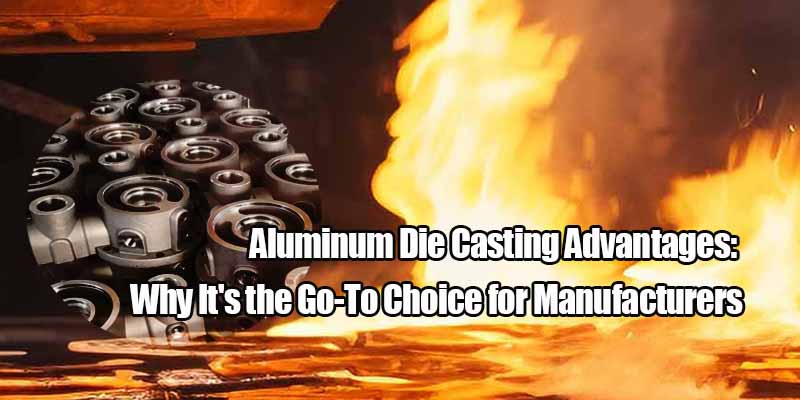Concept of Aluminum Die Casting:
Aluminum die casting is a type of pressure casting used to create parts. In this process, molten aluminum or aluminum alloys are poured into the inlet of a die-casting machine, which is equipped with molds for casting. The machine applies pressure to the molten metal, shaping it according to the mold's form and dimensions to produce aluminum or aluminum alloy parts. These parts are commonly referred to as aluminum die-cast parts.
The terminology for aluminum die casting may vary in different regions, such as aluminum die-cast parts, die-cast aluminum parts, aluminum castings, aluminum alloy die-cast parts, and so on.

Advantages & Features:
Aluminum and aluminum alloys have excellent fluidity and plasticity. The casting process is performed under pressure in a die-casting machine, allowing for the production of complex shapes with high precision and surface finish. This significantly reduces the amount of machining required for the castings and minimizes the casting allowance of aluminum or aluminum alloys.
The process not only saves electricity and metal materials but also greatly reduces labor costs. Additionally, aluminum and aluminum alloys are known for their excellent thermal conductivity, light weight, and high machinability.
Applications:
Aluminum die casting is widely used in various industries, including automotive manufacturing, internal combustion engine production, motorcycle manufacturing, electric motor production, oil pump manufacturing, transmission machinery manufacturing, precision instruments, landscaping, electrical construction, and architectural decoration.
Aluminum die-cast parts can be used in various applications such as automotive components, engine parts (like engine cylinder heads), gasoline engine cylinder heads, rocker arms, valve supports, electrical components, motor end covers, pump housings, building accessories, decorative parts, guardrail components, aluminum wheels, and more.
Basic Die Casting Processes:
The four fundamental processes in the aluminum die-casting industry are annealing, normalizing, quenching, and tempering. These processes are known as the "four fires" in die casting. Quenching and tempering are closely related and both are essential in the casting process.
Annealing:
This process involves heating the workpiece to an appropriate temperature and then slowly cooling it, depending on the selected material, to achieve a more balanced internal structure in the metal.
Normalizing:
The workpiece is heated to an appropriate temperature and then air-cooled. This process is primarily used to improve the machinability of the material and can also be used for components that do not require high precision as the final stage of die casting.
Quenching:
After heating the workpiece to a specific temperature and holding it there for a certain time, it is rapidly cooled in water or other inorganic salt solutions. This process hardens the material but also makes it more brittle.
Tempering:
To reduce the brittleness of steel after quenching, the workpiece is reheated to a temperature below 650°C (but above room temperature) and held there for a long period, followed by cooling. This process is called tempering.
Conclusion:
Aluminum die-casting parts made from aluminum materials and aluminum alloys offer good fluidity and plasticity, enabling the production of complex, difficult-to-manufacture castings. Castings made from aluminum alloys and aluminum metals have high precision and surface finish, significantly reducing machining time, lowering labor intensity, and conserving electricity and metal materials.
Due to their high internal and external quality, aluminum die-cast parts are widely used in industries such as automotive manufacturing, internal combustion engine production, motorcycle manufacturing, electric motor manufacturing, transmission machinery, precision instruments, landscaping, electrical construction, and many other sectors. This has made aluminum die-casting a popular process in the die-casting industry.





